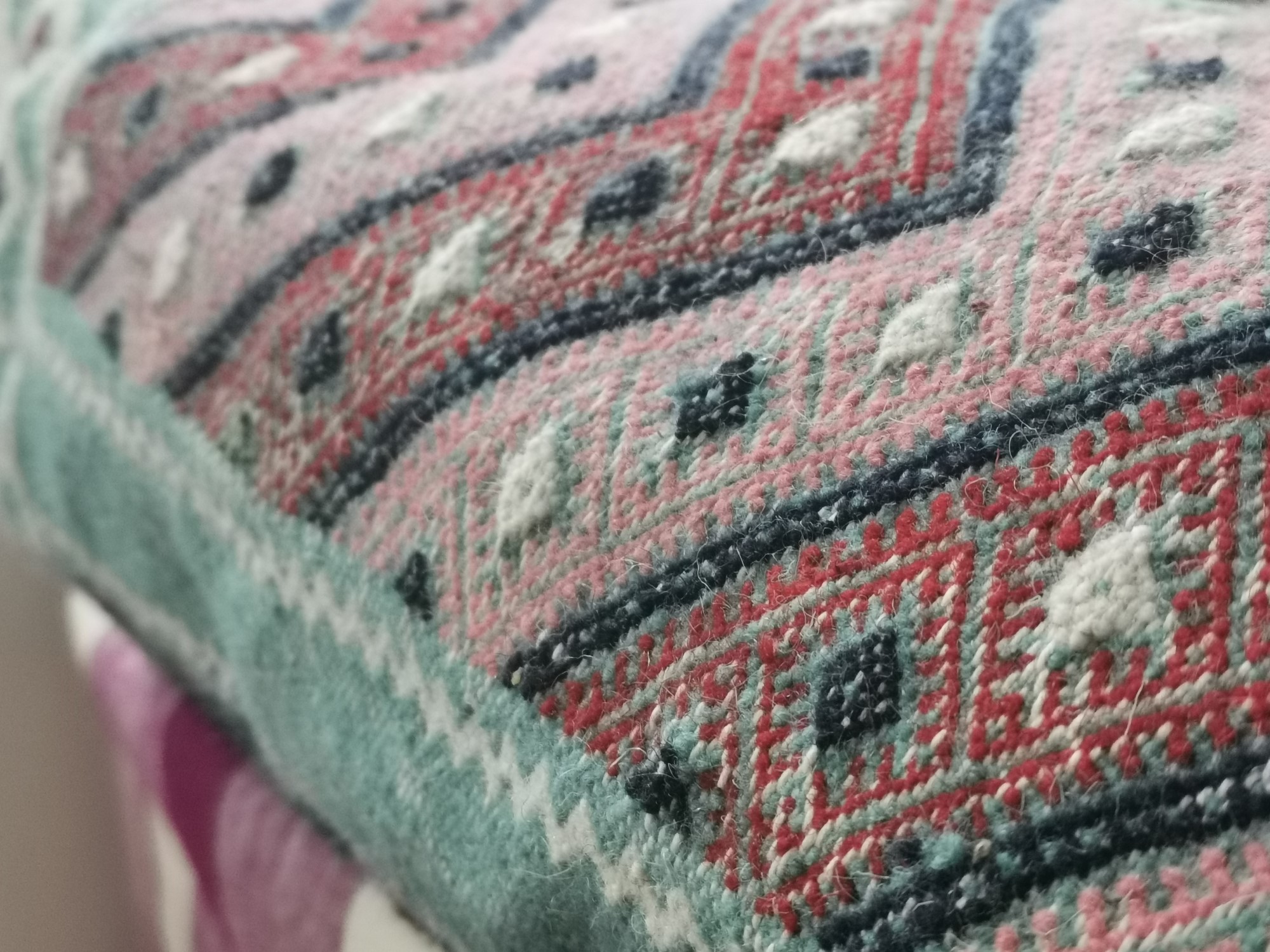Nothing can be more hypnotic than looking at a masterpiece and hearing the story behind it. Even more mesmerizing when you get a chance to share the ambiance with the forth comers of some ancient civilization.
Here we are at carpet place in Marrakech’s Souk de Tapis by Ismael’s. The unusual Moroccan carpets are covering floor hanging just like tapestries.
A young boy and his father own the shop. With a welcoming smile, they offered us an aromatic mint tea.

In Morocco, each carpet has its story and uniqueness. Looking at each of them seems like turning the pages of an illuminated Moroccan manuscript, all embroidered with subtle lines and bright shapes.
From the black-and-white “BeniOurains” to the convoluted kilims, the weaving techniques are a chronicle art type and an inevitability.
Moroccan Rugs History
The Moroccan rugs have a solid background that comes from Paleolithic times. Berber tribe used to weave them for their convenience, reflecting Morocco’s climate and its changes.
The snow-loaded, barren heights of Atlas give growth to thick, weighty bed covering and sleeping mats. The ruthless and intense warmth of Sahara agitates lightweight shawls.
Tribe’s existence also inclined size of carpets and looms to be transportable; The heavy carpets could not be transported any way above seven feet.

Ismail further explained that the Berber designs were not practical and required intense precision which was not possible practically.
You can sneak into the past, viewing the detailing of each rug; the motifs, and designs. These rugs were designed with keen and intense labor. Each pattern possesses a symbolic language that was passed down from masters of the art to peers.
To astonish us further, he told us that each rug could take a year or more to complete. The focus of the intuitive geometric designs portrays everything from women to devoutness and male security. The communication of the symbols describes and represents the story of each weaver.

These rugs are a powerful combination of less is more, and the hand-made detail adds to the quality and design of the rug. A similar expression was first delivered to mid-century modernists.
The popular architects of the 1930s also started to incorporate these rugs into their architecture. Some of these architects were Le Corbusier and Charles, which started to give a minimalist approach.
Frank Wright traveled to Morocco just for the reason to bring these unique rugs and he placed these Beni- Ourain rugs in each room of his house because he was obsessed with the design of these rugs.

From this time, the thin monochromatic designs and patterns have become famous in the Western world.
You will also experience a different variation in these rugs which are also known as Azilals. It is also a type of Moroccan rug that is found here and these rugs are woven with the help of dyed and un-dyed wool of sheep which gives it a distinctive appearance.
They were first crafted in Tadla (one of the provinces of Azilal) in the Atlas Mountains. They are usually manufactured by the AitBouzid, AitShokmane, AitBouOulli, and AitBougmez tribes.
Far erratic than the BeniOurains, they often make analogous natural colors. Also, the love to craft ebony diamond lattice patterns on white backgrounds. Their distinctive highlights can distinguish them.
The insinuations of henna and the indigo combined with saffron with the madder dyes have a lot of stories to express.
As per Berber panache, the color red signifies strength and power along with protection, the color blue is for wisdom, whereas the color yellow is for eternity, and the color green is for harmony.
This amalgamation of magic allegory and minimalist usefulness bounces the distinctiveness of their carpets. Each of these carpets is a fantastic bit of art has the spice to charm up any ambiance.

